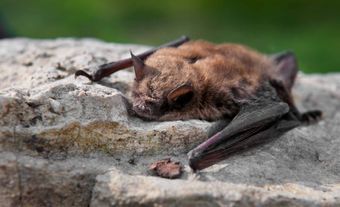The Wapiti (Cervus canadensis) is the second largest (after the moose), most highly evolved Old World deer. It is also known as the American elk. Its name wapiti is Shawnee for "white rump." Genetically it belongs to the Asiatic red deer, which split pre-Pleistocene from the European red deer (Cervus elaphus) and is thus only distantly related to the latter. It is more closely related to the Asiatic sika deer (C. nippon) and the alpine adapted white-lipped deer (C. albirostris). Its closest relatives, however, are the saltatorial (jumping) mountain red deer from Tibet and western China (C. weemsi), highly specialized to ascend in powerful jumps long, steep mountain slopes while hurtling over rhododendron and willow bushes. Wapiti and their counterpart in Siberia and outer Mongolia, called maral, have evolved as speedy enduring runners in open landscapes or along level trails. They originated in Pleistocene Beringia, moving east post-glacially into North America, and their genetically identical counterparts, the maral, moving west into the central Asia. Wapiti expanded their range and population only after the extinction of the American megafauna (large animals including the mammoth) about 11 000 years ago.
Distribution and Habitat
Before 1492 wapiti are relatively rare in the fossil record, but rapidly grew in abundance after the demise of North America's human populations from Eurasian diseases and genocide. They reached their maximum geographic range well before 1800. By 1835, however, the wapiti had disappeared from their eastern range (Ontario and Québec) through over hunting. They were re-introduced into Ontario, where they are thriving. They went extinct in Alberta prior to 1913, but were reintroduced from Yellowstone National Park (in the central northwestern United States) by 1917. There are scattered populations east of the Rockies in Alberta, Saskatchewan and Manitoba. They are found along the Rockies in British Columbia as well as on Vancouver Island and a small population introduced to the coast. A small introduced population is also found in Yukon.
Wapiti are social, tending toward life in open terrain. In North America they are found in widely different habitats. In Asia they are confined largely to the sub-alpine, constricted in distribution by other red deer subspecies. Males and females segregate, with females maximizing security from predation and stags maximizing access to forage. Stags are about 10% heavier than hinds (females).
Reproduction and Development
In rut, stags advertise with loud, clear bugling (the most vocal deer in Canada), and by soaking themselves with urine. Dominant wapiti stags form their respective female harems. The gestation period is relatively long, some 240 days; calves are born in June.
Relationship with Humans
Wapiti are an important game animal today. Although valued for its hide by Native people, the wapiti was not a favourite food animal and played apparently no great role in Aboriginal economics. Wapiti have been semi-domesticated in Siberia and China, where the antlers are used for medicinal purposes. Game-ranched elk have spread chronic wasting disease into western Canada from imports from the United States.

 Share on Facebook
Share on Facebook Share on X
Share on X Share by Email
Share by Email Share on Google Classroom
Share on Google Classroom






